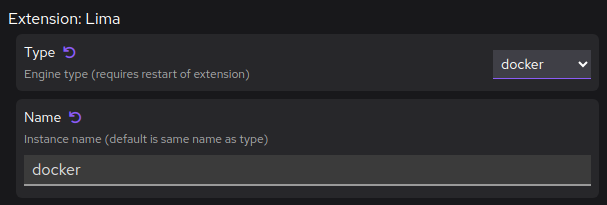Creating a Lima instance for container workloads with Podman Desktop
To use the Lima provider you need a Lima instance running a Linux machine.
In the future, Podman Desktop might be able to create Lima instances.
Consider creating a custom Lima instance to:
- Control the assigned resources: CPUs, memory, and disk size.
- Use the rootful connection by default, for example to run Kind.
Prerequisites
Procedure
-
In a terminal, create the Lima instance.
-
To create a Lima instance with rootless Podman, use the
podmantemplate:$ limactl start --name=podman template://podman -
To create a Lima instance with rootful Podman, use the
podman-rootfultemplate:$ limactl start --name=podman template://podman-rootful -
To create an Lima instance with rootless Docker, use the
dockertemplate:$ limactl start --name=docker template://docker -
To create an Lima instance with rootful Docker, use the
docker-rootfultemplate:$ limactl start --name=docker template://docker-rootful -
To select the number of CPUs, the memory, and the disk size, add the options to the
limactl startcommand:--cpus=2 --memory=2 --disk=50
-
-
Wait for the instance to start, and restart the Lima extension.
-
Go to Settings > Preferences > Extension: Lima to change the instance name and type.
-
Podman (default)
- Type: podman
- Name: podman

-
Docker
- Type: docker
- Name: docker

-
-
Go to Settings > Preferences > Extension: Lima to configure a custom socket name.
-
The default socket name is:
-
podman.sockfor Podman -
docker.sockfor Docker
-
-
To use a custom socket name:
-
-
Go to Settings > Extensions > Lima to disable or enable the extension after changes.
-
Verification
-
To verify the connection to a running "podman" instance:
$ podman.lima version -
To verify the connection to a running "docker" instance:
$ docker.lima version